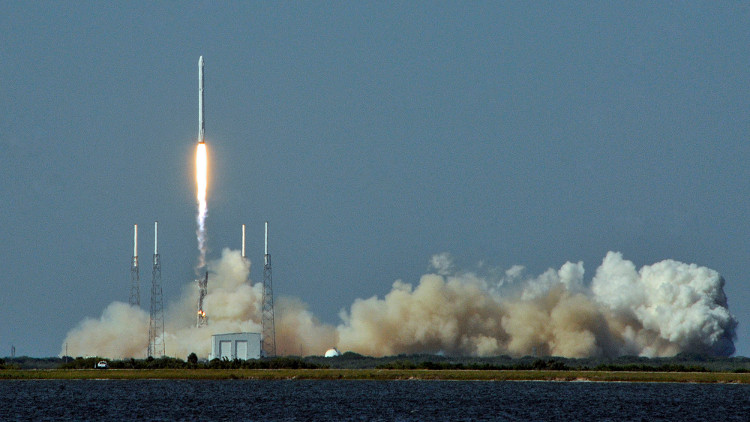Falcon 9 missiles bring satellites into orbit, safely back to Earth
On August 14, SpaceX (USA) Falcon 9 spacecraft returned to Earth successfully at the first stage on an unmanned ship on the Pacific after taking a guard Japanese telecom goes into orbit.
This year, California-based SpaceX has conducted a total of six missile recall tests, including one grounding and five unmanned navigators on the sea and only one recovery. June is a failure.
Everything went smoothly in the first phase when the missile approached perpendicularly about 9 minutes after landing on the unmanned vessel, which was anchored on the sea, which was built as a docking station on Thai Binh. Ocean.
The test of bringing missiles back to Earth after introducing probes to the space station is part of Space X's efforts to produce rockets to be re-used perfectly.

Falcon 9 rocket launchers leave the launch pad at Cape Canaveral on April 8. (Source: AFP / VNA).
If tested successfully, the company hopes to drastically reduce shipping costs to space.
Normally, these missiles can only be used once, after completing that task, they catch fire and fall into the sea.
Estimated, each Fakcon 9 rocket worth $ 60 million, while fuel costs for each launch to orbit is $ 200,000.
JCSAT-16 is Space X's second telecommunications satellite launched this year, which provides a wider range of space services such as image loading, data transfer in Asian and Russian countries, Oceania, Middle East and North America.
At this point, the second phase of Falcon 9 is scheduled to launch at 1:26 am (local time) from Cape Canaveral air base in Frorida, bringing the JCSAT-16 probe into space.
Founded in 2002, SpaceX is under the management of technology billionaire Elon Musk. Currently this private corporation is one of the leading companies in space transport and a partner of NASA.
SpaceX has long been planning to expand into rocket technology by developing rockets that can be reused after every spacecraft launch. This ambition will help the private space corporation save millions of dollars for each launch.
- SpaceX brought two satellites to monitor the Earth's water level on the universe
- SpaceX is about to put Japan's telecommunications satellite into orbit
- SpaceX missile re-launches set two records in one day
- SpaceX successfully launched the SES-9 satellite into orbit, failing to land missiles on barges
- The Falcon-9 boosters landed on the launch in the sea failed
- SpaceX for the 50th time successfully launched the Falcon 9 rocket on Earth's orbit
- Chinese missiles dropped Brazilian satellites
- Jeff Bezos and Elon Musk: whose rocket is bigger?
- SpaceX has gone down in history with the highly successful Falcon 9 reusable missile launcher
- SpaceX is about to launch missiles carrying over 6 tons of satellites
- SpaceX launches and successfully recovers Falcon boosters 9
- Bulgaria's first geostationary satellite to orbit
 Van Allen's belt and evidence that the Apollo 11 mission to the Moon was myth
Van Allen's belt and evidence that the Apollo 11 mission to the Moon was myth The levels of civilization in the universe (Kardashev scale)
The levels of civilization in the universe (Kardashev scale) Today Mars, the sun and the Earth are aligned
Today Mars, the sun and the Earth are aligned The Amazon owner announced a secret plan to build a space base for thousands of people
The Amazon owner announced a secret plan to build a space base for thousands of people